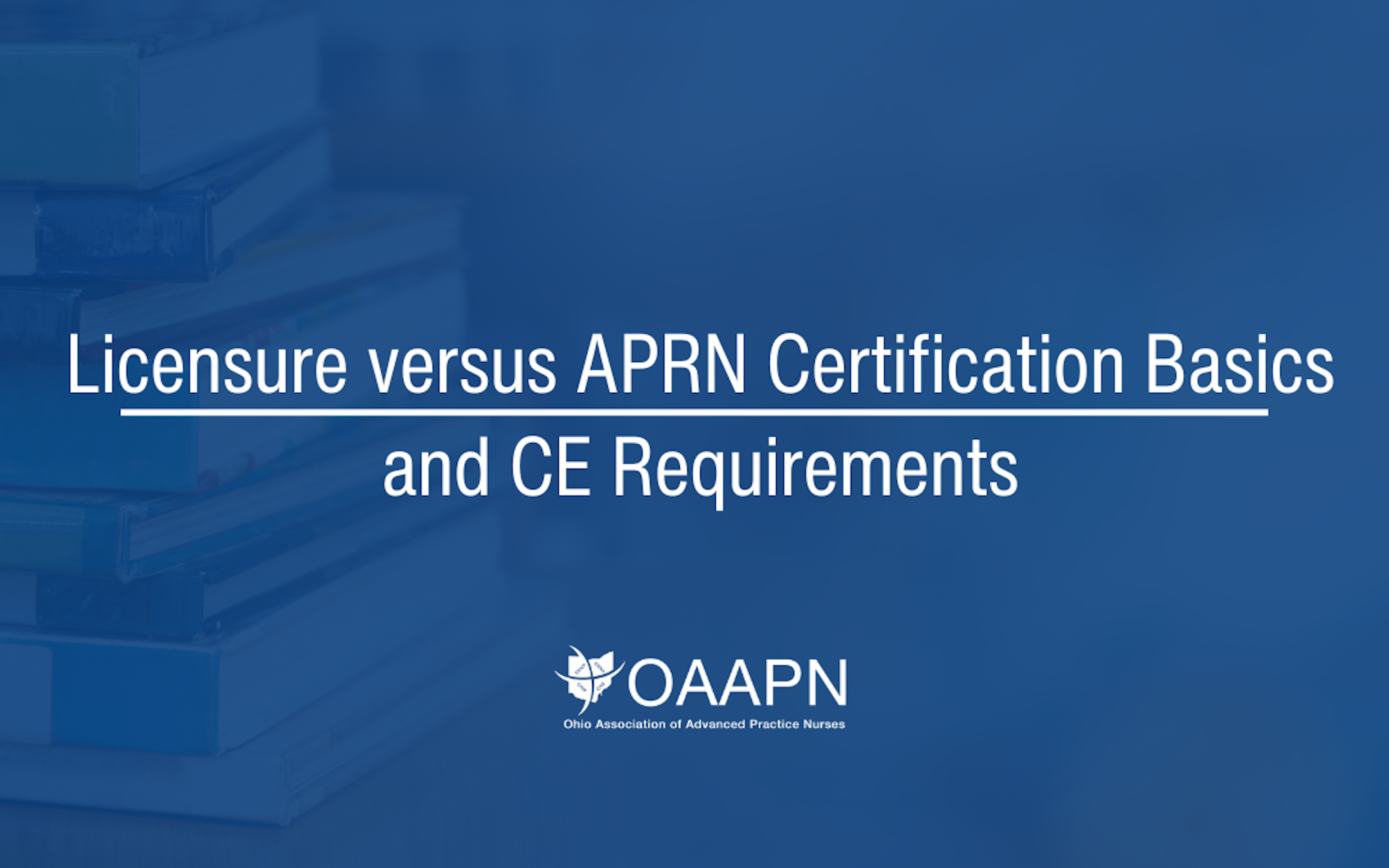RN Licensure
Licensure is the state’s grant of legal authority to practice a profession within a designated scope of practice. Under the licensure system, states define, by statute, the tasks and function or scope of practice of a profession and define the work that may be legally performed only by those who are licensed. Licensure results from the enactment of a nurse practice act by state legislatures to regulate nursing. The primary purpose of licensure is public protection and safety, the major stakeholder for licensure is the public. Boards of Nursing use licensure examinations to assess entry-level practice knowledge that meets a minimal competency level necessary to protect the public. All states have adopted the National Council Licensure Examination-Registered Nurses (NCLEX-RN) as the nursing licensure examination used for entry-level RN licensure.
APRN Licensure
APRN licensure is an additional licensure beyond RN licensure granted by each state. All nurses holding APRN licensure MUST maintain an active RN licensure to hold an APRN license. The qualifications to obtain an APRN licensure are different in each state but most states, including Ohio, require national certification to hold an APRN license. To be licensed as an APRN in Ohio, one must possess an active RN license, an active APRN license, AND a current national APRN certification.
National Certification
The federal government has defined “certification” as the process by which a non-governmental organization recognizes an individual who has met predetermined qualifications specified by that organization. As the advanced practice nursing role became recognized as distinct from the RN role, Boards of Nursing began looking for methods to assess entry competency to advanced practice. There is currently no single national advanced practice registered nurse (APRN) national licensure examination. Most Boards of Nursing, including Ohio, now use APRN certification as one of the prerequisites for APRN licensure. There are multiple national APRN certifying boards that administer national certification exams. For example, the American Nurses Credentialing Center (ANCC) certifies nurse practitioners and clinical nurse specialists in a variety of specialties. The American Academy of Nurse Practitioners certifies nurse practitioners in adult, gerontological, and family care (AANP-BC). The National Association of Pediatric Nurse Practitioners (NAPNAP) and the Pediatric Nursing Certification Board (PNCB) credential pediatric specialists. The National Board of Certification and Recertification for Nurse Anesthetists (NBCRNA) certifies certified registered nurse anesthetists. The American Midwifery Certification Board (AMCB) is the certification body for certified nurse midwives.
There are other specialty boards that have certification exams for APRNs; you will want to check with the Ohio Board of Nursing (OBN) to determine which certifications they deem acceptable for APRN licensure/re-licensure. Most national certifications require documentation of continuing education hours AND practice hours or other categories of scholarship or competency to maintain and renew APRN certification and therefore APRN licensure.
Continuing Education
After initial licensure and certification, APRNs must continue to meet the ongoing/renewal requirements/criteria to continue to practice legally. Minimum continuing education requirements are a central component of maintaining both licensure and national certification. Those requirements are determined by the State of Ohio Board of Nursing for licensure, currently renewed every two years (in the odd years) for both the RN and APRN licenses. Most APRN national certification boards renew every five years and are usually dated from the date or quarter of an individual’s initial certification. You must check with your national certification board(s) to determine the time frame, process, number, and categories of continuing education. Each individual national certifying organization also determines the type of continuing education (CE) accepted and which CE providers may provide accepted CE credits for recertification.
| APRN Licensure versus Certification Comparison | ||
| Licensure | Certification | |
| Required for Practice | Yes, required for practice | Voluntary, but required as part of licensure in OH |
| Title | Legally recognized (e.g., APRN, APRN-CNP) | Not legally recognized (e.g., FNP-BC) |
| Purpose | Public protection | Further organization’s business interests |
| Developed/issued by | Licensure agencies (State of Ohio) | Private for-profit organizations (certifying bodies/boards) |
| Major stakeholders | Public | Educational programs, practitioners, certification programs, employers |
| Timeframe | Renew every 2 years (odd years) | Renew every 5 years |
| Continuing education | Continuing education (CE) requirements determined by OBN (Section 4723.24, [C], ORC)
APRNs must complete at least 24 hours of CE for each APRN license held in addition to the 24 hours of CE required for RN license renewal. CNPs, CNSs & CNMs must include at least 12 of the 24 hours in advanced pharmacology. For additional information r/t Ohio APRN renewals and CE, see link to PDF document: https://nursing.ohio.gov/wp-content/uploads/2022/08/CE-FAQs-APRN_202283.pdf |
Each national APRN certification body determines their own recertification criteria and CE requirements
Check your certification body(ies) for specifics about accepted CE types and providers for renewal/ recertification |
| Each APRN is responsible for meeting and maintaining licensure and national certification requirements to legally practice in Ohio | ||
Additional reference:
Chornick, N. (2008). APRN Licensure Versus APRN Certification. JONA’s Healthcare Law, Ethics, and Regulation, 10 (4), 90-93. doi: 10.1097/NHL.0b013e31818ede05.
(Information current as of 8/26/22)
